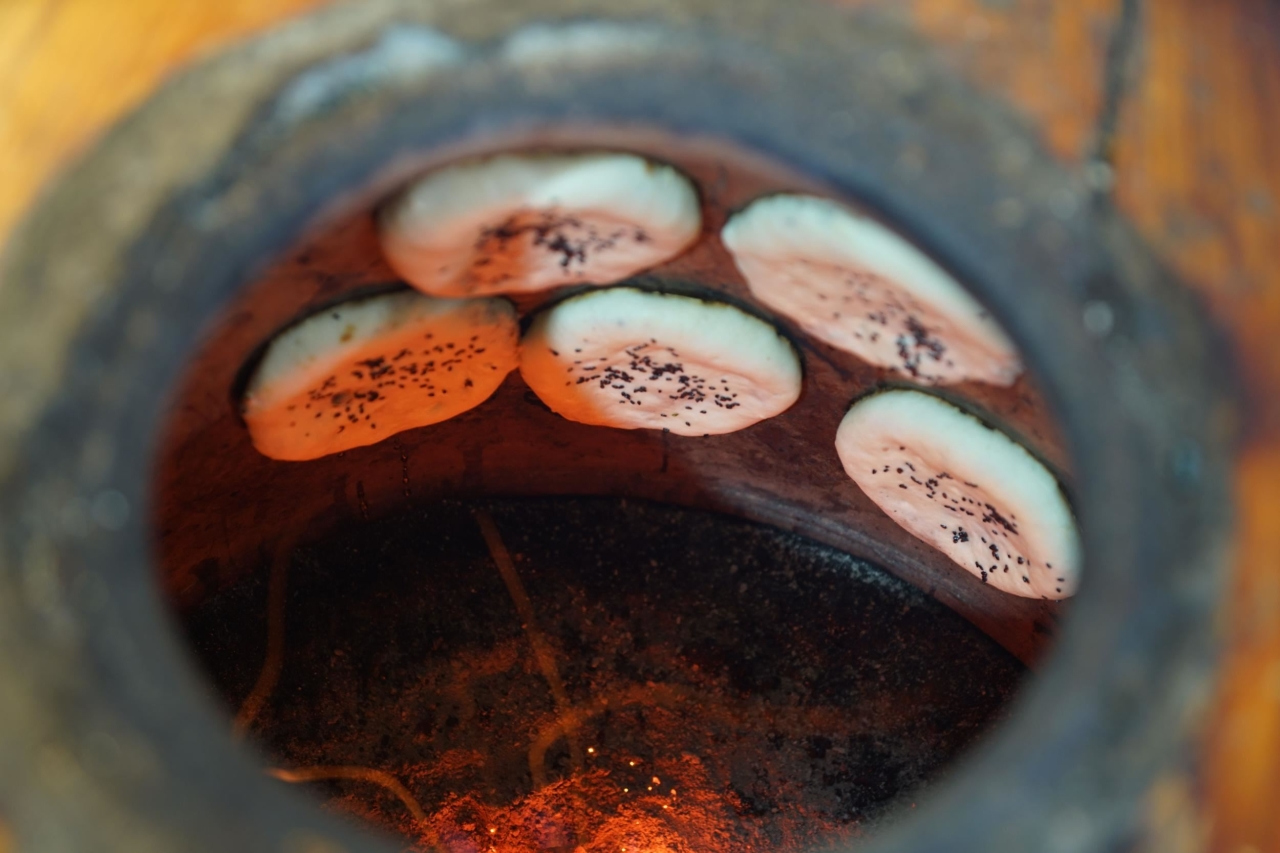
A photo shows Jinyun Shaobing, a popular Chinese-style meat pie that originated in Jinyun County, Lishui City, east China's Zhejiang Province.
Jinyun Shaobing, a Chinese-style meat pie with a history spanning 650 years, has garnered popularity in 16 countries and regions outside China, contributing to industrial revitalization and improved living standards.
Jinyun Shaobing is known for its crispy crust and savory meat filling. It originated in Jinyun County, Lishui City, East China's Zhejiang Province.
Legend has it that Jinyun Shaobing was invented by Huangdi, or the Yellow Emperor, revered as a common ancestor of all Chinese people. Huangdi supposedly baked dough inside a furnace while making elixirs on Dinghu Peak in Jinyun County. Enticed by the aroma, locals learned to make the dish. Over time, this led to the creation and widespread popularity of the uniquely flavored Jinyun Shaobing.
The great taste of the pie, which is stuffed with meat and dried preserved vegetables, is attributed to high-quality ingredients - water, wheat flour, meat, and dried preserved vegetables - and distinct cooking techniques.
Preparing the crust takes about four to six hours, with timing and methods varying with temperature. Similarly, the filling and heating duration and intensity greatly influence the food's taste. The preferred filling for Jinyun Shaobing is fresh pork layered with dried preserved vegetables, a multi-step process.

A photo shows Jinyun Shaobing, a popular Chinese-style meat pie that originated in Jinyun County, Lishui City, east China's Zhejiang Province.
For centuries, Jinyun Shaobing has been not just a popular specialty of Jinyun County but also a source of income for many local people. According to elderly residents of Jinyun, people used to carry two buckets of Jinyun Shaobing on a pole to peddle it in the streets.
In 2014, the local government set up a dedicated office and an association for special foods to promote Jinyun Shaobing. They organized training sessions on Jinyun Shaobing-making techniques and held festivals to enhance the industry's development.

A photo shows chefs being trained in techniques for making Jinyun Shaobing, a popular Chinese-style meat pie that originated in Jinyun county, Lishui city, east China's Zhejiang Province.
These efforts have boosted the food's popularity and the industry's growth. In recent years, Jinyun Shaobing has been registered as a geographical indication certification trademark in China and the European Union. It has also earned recognition as a "national special rural food" and a "China Famous Snack." In 2021, the techniques used to create Jinyun Shaobing were designated a national intangible cultural heritage in China.
Today, Jinyun Shaobing has grown from a type of street food into a large industry that enjoys great popularity across China and globally.
Editor: Yu Zhixin